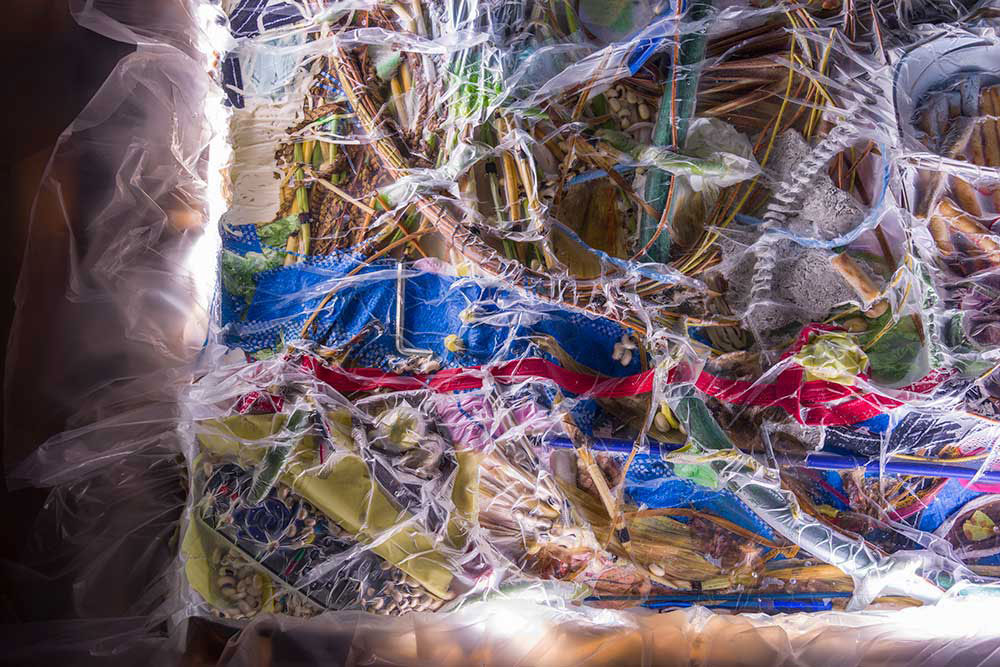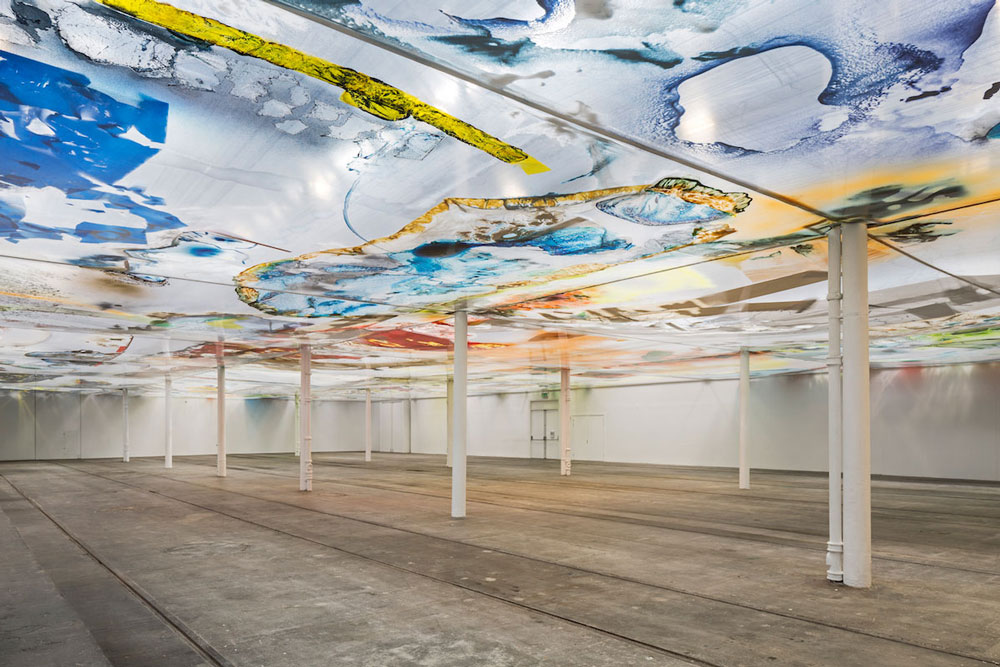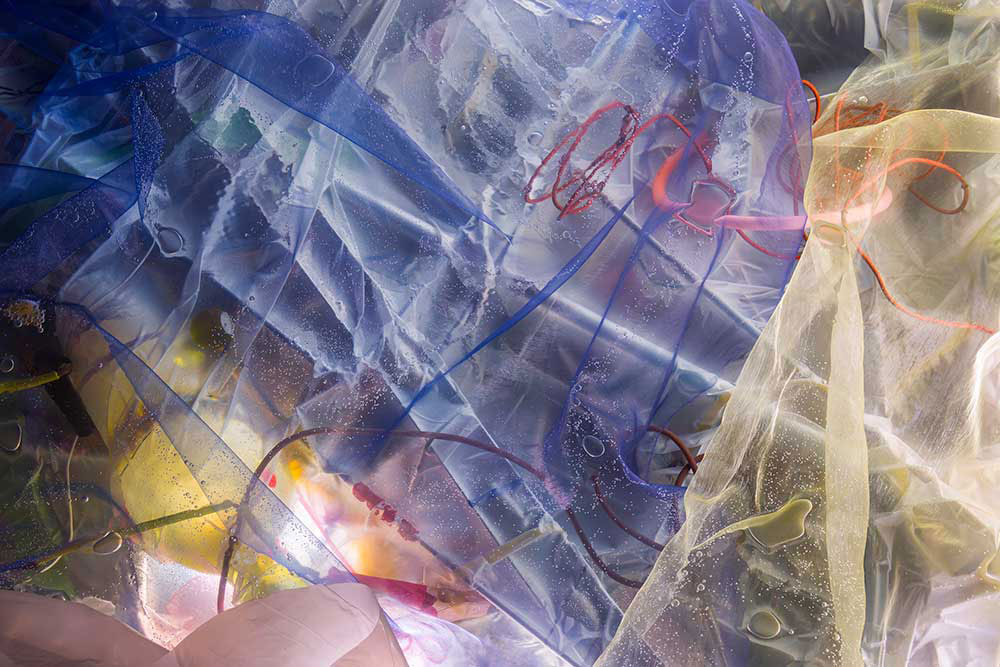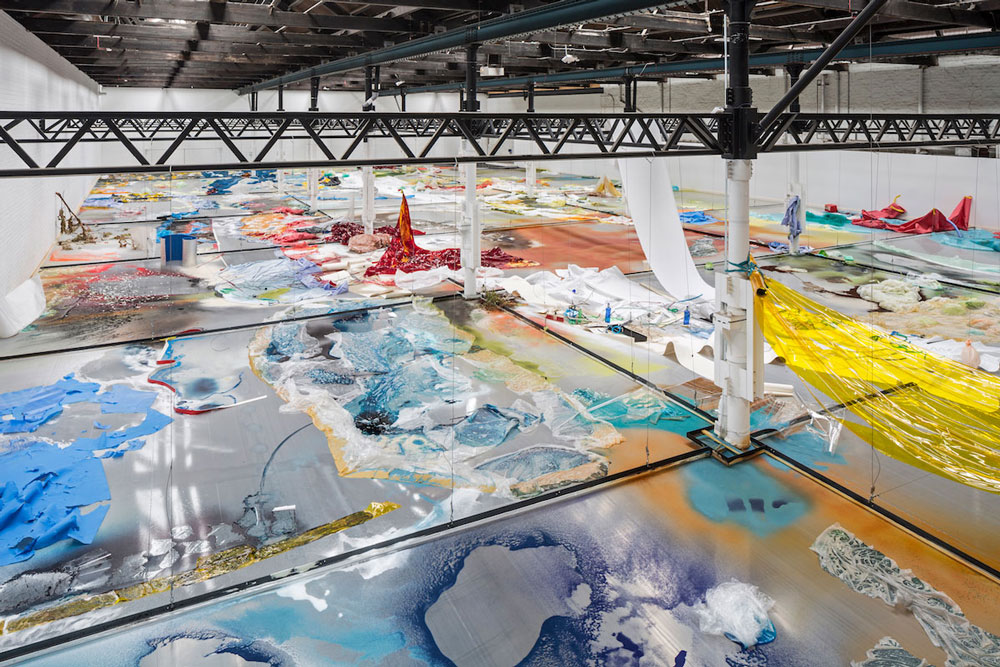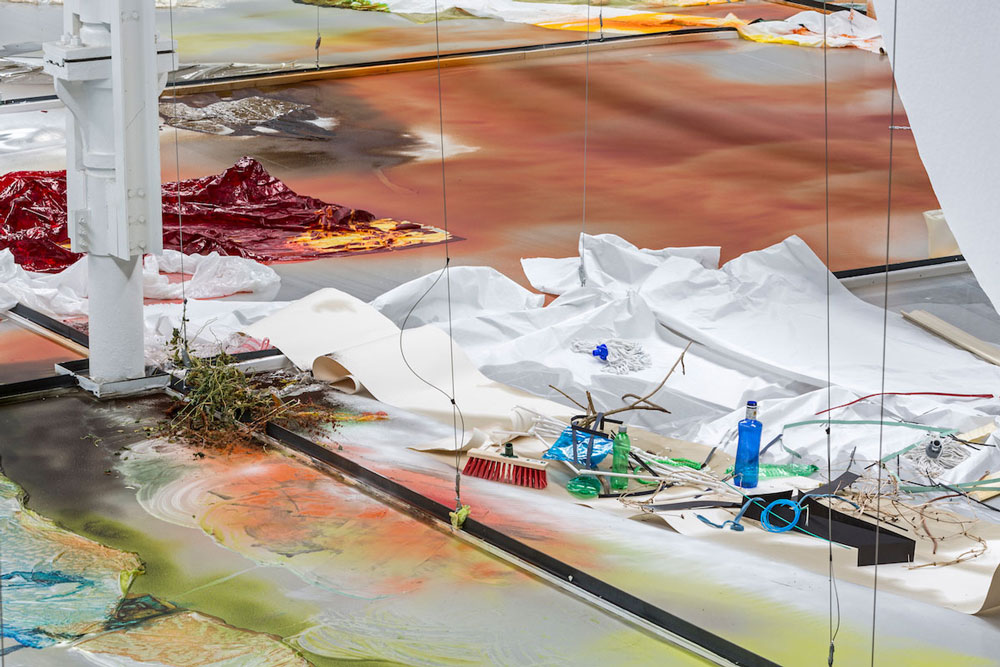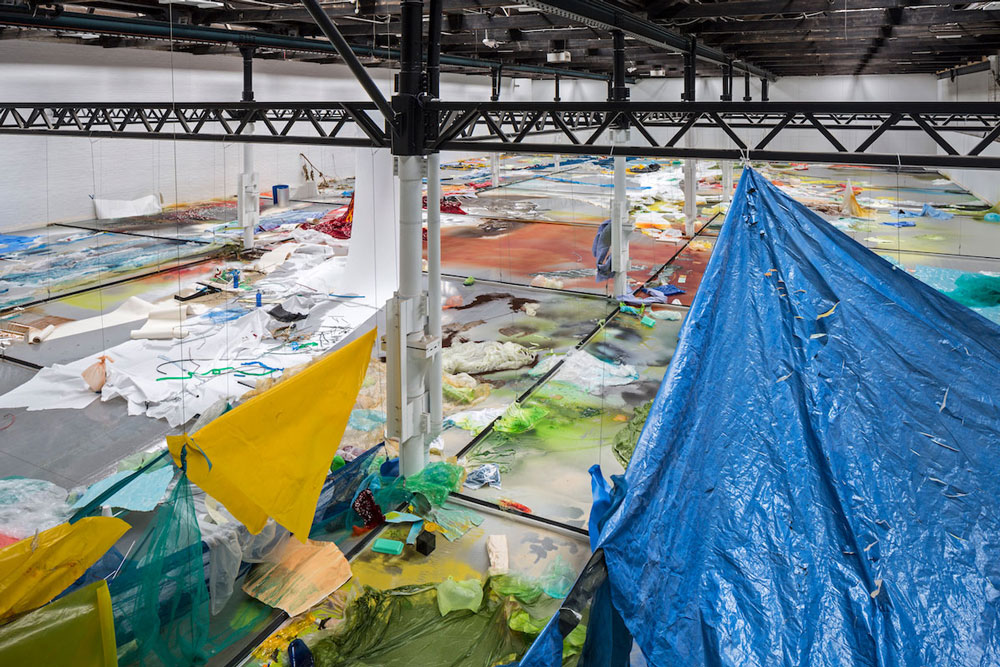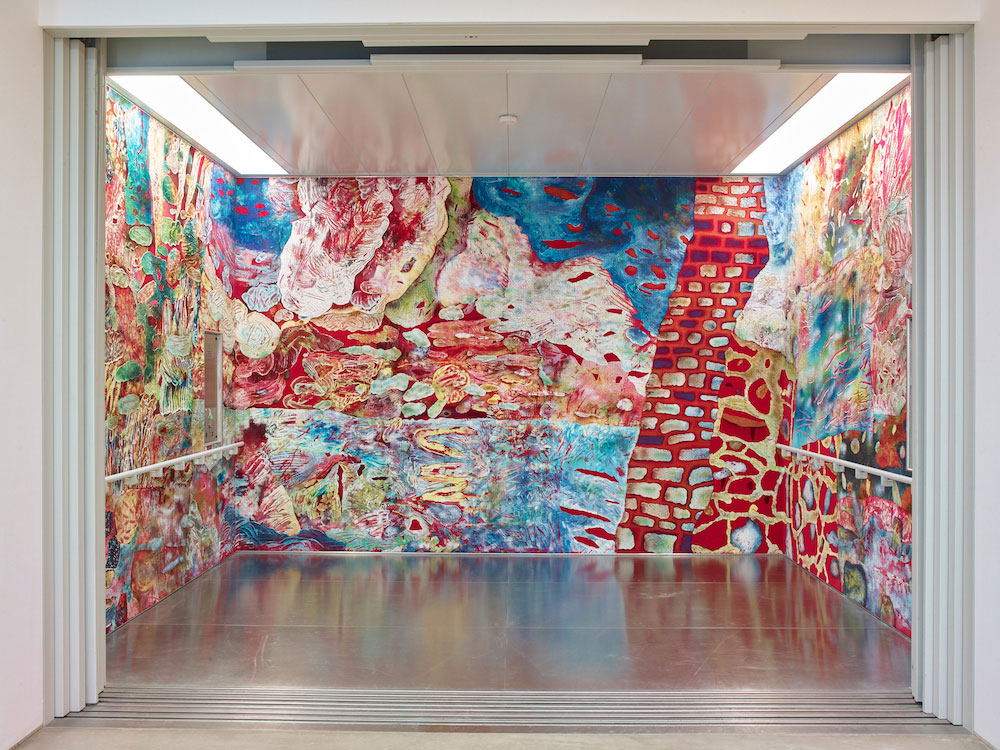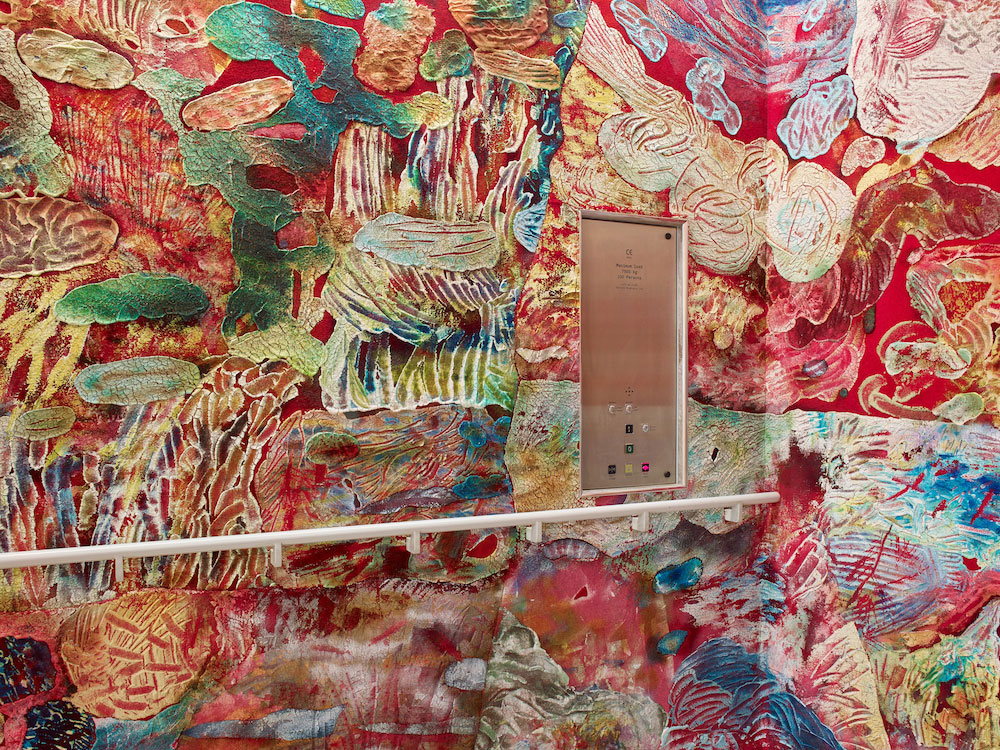ART-TRIBUTE:Weaving and other Practices… Samara Scott
 We continue our Tribute with the British artists Samara Scott (1985- ). Since graduating from the Royal College of Art, London in 2011, Samara Scott has developed a practice fuelled by the context of hyper-consumerism. This has resulted in brightly colored, attractive installations made of manufactured objects or by-products of mass production.
We continue our Tribute with the British artists Samara Scott (1985- ). Since graduating from the Royal College of Art, London in 2011, Samara Scott has developed a practice fuelled by the context of hyper-consumerism. This has resulted in brightly colored, attractive installations made of manufactured objects or by-products of mass production.
By Efi Michalarou
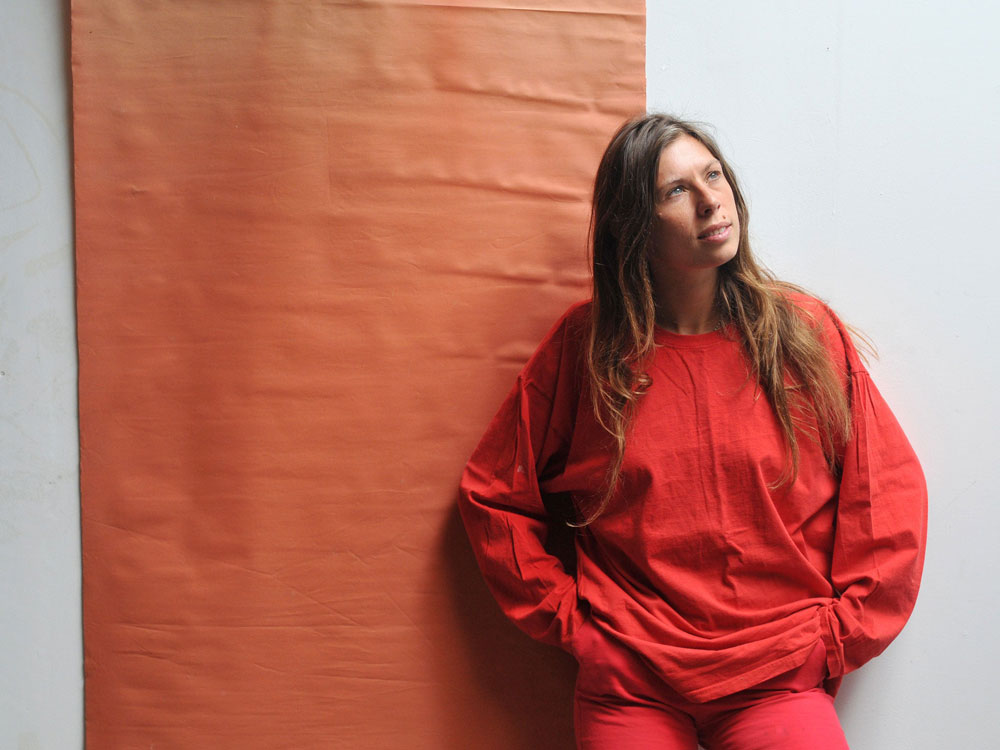 Samara Scott approaches her work from a highly contemporary consumers perspective, devouring information, stimulation and references in a wanton manner and operating them with a liquidity and absent mindedness that recalls pop arts’ emergence in 50’s. Through employing painterly genre in a thematic way the work chooses juicy effects and bruised saturation over craft – absolutely embracing paintings’ fear of becoming décor. Surroundings curdle and Sculpture oozes onto and pollutes surface. Before each exhibition, she experiments extensively for aesthetic purposes with the resistance and performance of the large array of materials that make up her artworks, such as sponges, toilet paper, nail polish, lettuce leaves, fabric softener, cigarette ash, toothpaste, candles, tights, and tin foil. The work “Still Life” (2013), a roll of brightly painted toilet paper, gestures towards the fragile and disposable nature of supermarket commodities. Reflecting the unapologetic artifice of corporate promotion, her garish use of colour and synthetic materials is outlandish but alluring. In a world increasingly invested with hyperreality, Scott seeks to reignite our tactile senses whilst remaining true to the materiality of everyday experience. For all of the strange materials she employs, Scott’s work appears beautiful. It’s a problem, she says, adding: “There is a high-street, Disneyland quality, a relentless toxic positivity to the work. I am using seduction as a tool to lure people in.” Unlike Duchamp’s ready-mades, usually serene in their simplicity, Scott says that everything she does “confuses things; it is a confused world.” Slipping between infusions of nature and artificial imitation, antiquity and plasticity, synthetic import and organic craft class, the materiality mish mashes a trickled down Art History into an interior language of disposable nostalgia and melancholy. There’s a certain slippiness. An uncomfortable eroticism and mastication between textures, products, fashion and style. An associative membrane, a dense scenery or mood board of shapes, smells, forms and materials.
Samara Scott approaches her work from a highly contemporary consumers perspective, devouring information, stimulation and references in a wanton manner and operating them with a liquidity and absent mindedness that recalls pop arts’ emergence in 50’s. Through employing painterly genre in a thematic way the work chooses juicy effects and bruised saturation over craft – absolutely embracing paintings’ fear of becoming décor. Surroundings curdle and Sculpture oozes onto and pollutes surface. Before each exhibition, she experiments extensively for aesthetic purposes with the resistance and performance of the large array of materials that make up her artworks, such as sponges, toilet paper, nail polish, lettuce leaves, fabric softener, cigarette ash, toothpaste, candles, tights, and tin foil. The work “Still Life” (2013), a roll of brightly painted toilet paper, gestures towards the fragile and disposable nature of supermarket commodities. Reflecting the unapologetic artifice of corporate promotion, her garish use of colour and synthetic materials is outlandish but alluring. In a world increasingly invested with hyperreality, Scott seeks to reignite our tactile senses whilst remaining true to the materiality of everyday experience. For all of the strange materials she employs, Scott’s work appears beautiful. It’s a problem, she says, adding: “There is a high-street, Disneyland quality, a relentless toxic positivity to the work. I am using seduction as a tool to lure people in.” Unlike Duchamp’s ready-mades, usually serene in their simplicity, Scott says that everything she does “confuses things; it is a confused world.” Slipping between infusions of nature and artificial imitation, antiquity and plasticity, synthetic import and organic craft class, the materiality mish mashes a trickled down Art History into an interior language of disposable nostalgia and melancholy. There’s a certain slippiness. An uncomfortable eroticism and mastication between textures, products, fashion and style. An associative membrane, a dense scenery or mood board of shapes, smells, forms and materials.